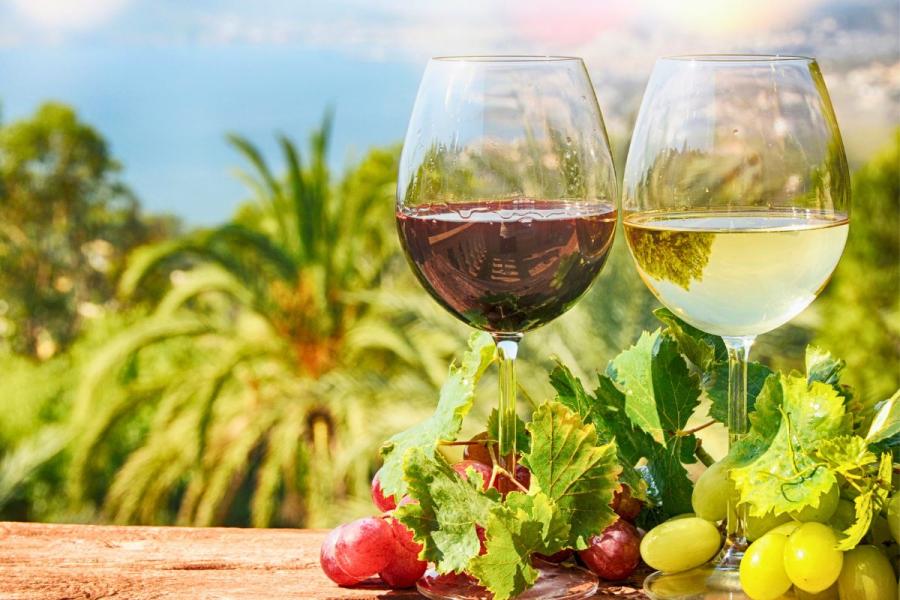Wine in Spain
Wine in Spain is ancient history, as Spain is the second oldest wine producing country in Western Europe. It also has the largest vine area of any country in the world, but many of them are in very dry and low producing areas so the Spanish wine output comes only in third place.
There has been a wine revolution accompanying the one in the Spanish table. Spain can now boast of having an extremely lively and varied wine industry. Some of the wines produced in Spain can be counted between the most modern in Europe.
Wine in the Spanish regions
The wines of Spain, like its people, are diverse, robust, and full of life. The roots of Spanish winemaking go back thousands of years and form a proud tradition of quality. Nowhere is this more evident than in Andalusia, where sherry is the beverage of choice.
A fortified wine (distilled alcohol is added before aging), sherry is actually several wines. Fino, Oloroso, Manzanilla, and — the drink made famous by Edgar Allan Poe — Amontillado, are among the varieties all called sherry.
The Fino and Manzanilla are younger and crisper, more acidic. The Olorosos and Amontillados are longer in the barrel, growing more mellow as they age.
Often drunk as dessert wines, especially by the British for whom sherry became something of a national drink, they go well with many other kinds of foods.
The British have more to thank Spain for than sherry, though. Not only did Henry VIII's first wife come from the region, so did the well-regarded Carignan.
As you would expect, reds are prominent in this land of ample sunshine and red soil. The Aragonese don't disappoint, producing many full-bodied wines, full of color and aroma. The Grenache, of course, is considered a regional treasure by vintners in this area.
Castilla, having it's own literary heritage, produces wine equally deserving of fame. To many, the entire region is considered one enormous vineyard. La Mancha, evoking memories of Don Quixote, is one reason for the reputation. It's reputed to be the largest wine region in the world, though there are many Frenchmen who would, of course, argue.
Just to show how iconoclastic they truly are, from this powerhouse of winemaking comes a white named Airen. Crisp and delightful, it ensures that no Spanish knight will need to slay doubters.
Reds are well represented, though, by the Tempranillo often blended with French varieties, such as Merlot or Cabernet Sauvignon. Even Syrahs are beginning to be seen here.
North of Madrid are to be found the whites of Rueda. Delicate and light, they're made from a local variety called Verdejo. Sauvignon Blanc, too, is making an appearance.
But traditions in Spain change slowly and red is still dominant. Robust and heavy, the Ribera has seen a renaissance in the the last few decades. The Tinto Fino, a kind of Tempranillo makes a complex red that ages well.
Mencia has its own tradition of red, based on the Cabernet Franc. Secluded near Castilla y Leon, the wines are intense. Lighter roses are a staple of the region, too, though. A specialty white, made from Godello, is produced here as well.
Catalonia, with coasts on the Mediterranean, has been making wine since the first Greeks arrived here. It continues those ancient traditions with vinos rancios that are only for the most hardy. But, for those who prefer something lighter, Catalonia is happy to provide a white from the Penedes.
It will also cheerfully serve a sparkling wine from Cava. The latter is actually a kind of Spanish champagne, but much more full-bodied than the French version, as befits the area.
But to get the most distinctive feel, the best bet is to try one of the reds of Tarragona. Full-bodied, from Cariñena and Garnacha grown in slate-enriched earth, it forms the pinnacle of wine from Catalonia.
Last, but far from least, Galicia continues to make wines as it has since Roman times — though in recent times the whites have come to the fore. Here Celtic traditions mix with Roman to produce wines that combine with seafood like no others in the world.
The moist climate and lower amount of sunshine produce wines high in acid and delightfully crisp. Most are made from varieties found only here.
Like so much about Spain, the country is filled deep with traditions but reaching into the 21st century to produce wines that can compete with any from around the world.
Central plains
Castile-Leon, La Mancha, Extremadura.
Northern coast
Basque Country, Asturias and Cantabria, Galicia.
North east interior
Aragon, La Rioja and Navarra.
Mediterranean
Catalonia, Levante.
The south
Andalucia, fortified wines and brand
The Islands
Baleares, Canarias.
Jerez is the Spanish word for sherry and Jerez de la Frontera can be considered the capital of sherry.

